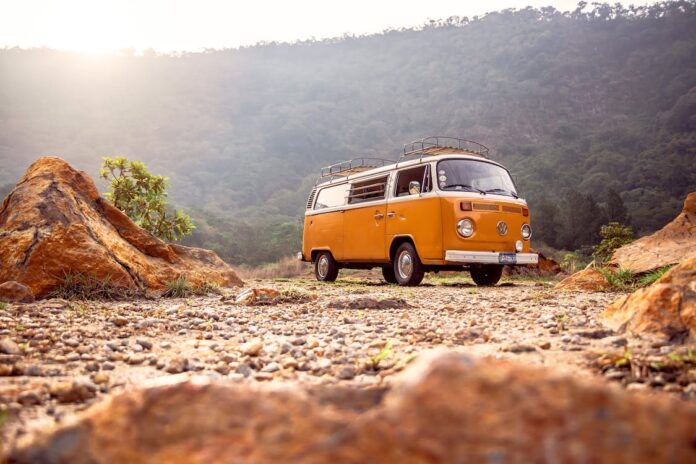Do you dream of capturing mesmerizing images of wildlife? Do you want to experience thrilling wildlife photography adventures? If you want to photograph animals in their natural environment, then you must learn a few essential tips and get ready for the exciting adventures that await. Keep reading to discover more about wildlife photography adventures and the best tips for photographing animals in their habitat.
1. Capturing the Earth’s Wild Kingdom: Tips for Wildlife Photography Adventures
Wildlife photography can be an incredibly rewarding pursuit. Whether you’re photographing birds in flight or capturing intimate portraits of deer and small mammals, it’s an amazing way to connect with nature and witness the beauty of the wild world. Here are a few tips to help beginners get started with capturing the planet’s wild kingdom.
- Get in the Right Location: When beginning photography, you’ll want to find places where you can easily observe wildlife. Go to areas that are already known for hosting animal populations, or research areas near you that have reports of animals. Many parks offer special tours or areas to go to find animals.
- Bring the Right Gear: Don’t let subpar equipment prevent you from getting the perfect shot. Invest in a good DSLR or mirrorless camera with a long lens. Pack extras such as filters, batteries, and memory cards. The weight of your equipment will vary depending on the type of photography you plan to do.
- Wait it Out: Wildlife photography requires patience. Animals are unpredictable and their movements cannot be predicted or rushed. Spend time observing the location before shooting; this can help to anticipate the behavior and movements of the wildlife before taking pictures.
- Know the Animals: The more you know and understand about the animals you’re trying to photograph, the better your photos will be. Learn animal behavior patterns and study their habitat.If you’re going to be working in one location for a while, observe and learn from far away at first, then get closer as the animals get more used to you.
Once you’ve mastered the basics of wildlife photography, consider taking a course to brush up on your skills. Investing in local guides or group tours can be great when you’re visiting new areas that are known for amazing wildlife scenes or opportunities. With patience and practice, you’ll be snapping away like a pro in no time!
2. Journey into the Great Outdoors: Find the Perfect Animal Habitat for Photoshoots
Explore Natural Landscapes
Photoshoots in nature are perfect for capturing the majestic beauty of animals in their natural habitats. From the lush greenery of a mountain peak to the serene tranquility of a lake, there are many wonderful places to explore.
Choose Your Animal Habitat
Begin by researching the options. What type of animal do you want to be the star of the photoshoot? Deer, elk, bears, birds, beavers, and other wildlife can be filmed in a variety of outdoor settings. Consider factors such as safety, terrain, abundance and location of the wildlife you’d like to feature.
Be Prepared
Before embarking on an animal habitat photoshoot, it’s important to prepare for the wildlife you may encounter.
- Check the laws and land restrictions.
- Plan a safe shooting location and ensure there is easy access.
- Dress so as to blend in the natural environment.
- Check the weather forecast, so you are ready for sudden changes in the elements.
- Pack your camera, tripods, lights and any special photography equipment you may need.
Be Humane
When shooting in nature, the health and safety of the animals is paramount. Be sure to approach them and their habitat with respect, giving them a safe space to move about. Never use bait nor do anything that may cause the animal to respond aggressively. Your shots should be designed for conservation and education in harmony with nature.
3. Picking the Right Gear: Preparing to Capture Animals in Their Natural Environment
When it comes to capturing animals in their natural habitats, having the right gear is essential. Photography equipment is expensive and you don’t want to waste time or money by overestimating what you need.
Camera: The camera is your foundation for taking wildlife photographs. You should determine your budget, needs and objectives before you invest in a camera. Digital single-lens reflex (DSLR) cameras offer the best quality and are most commonly used for wildlife photography.
Lens: When it comes to lenses, choose a lens that will work well in low-light conditions and be long enough for the types of shots you want to apply. Telephoto lenses (200-300mm) are perfect for wildlife photography as they offer an extended reach and make distant subjects appear closer.
Accessories: To get the optimal shot, you’ll want to equip your setup with the right accessories. Here is a list of four accessories to consider:
- Tripod/Monopod: This will be your primary accessory for wildlife photography. It will stabilize your camera and also give you more flexibility in setting up the shot.
- Remote Shutter Release: This device will help you to take the shot without having to manually press the shutter button.
- Teleconverter: This device fits between your camera and lens and helps to extend the reach of the lens by up to 2x.
- Filters: Many filters are available to enhance the quality of your shots. Choose one based on the type of photography you are doing.
By taking the time to choose the right gear for your wildlife photography, you’ll give yourself a better chance of success in capturing animals in their natural environment.
4. All About the Light: Implementing the Best Camera Settings for Photographing Wildlife
Photographing wild animals in their natural habitat can be challenging — and rewarding. Getting the perfect picture requires you to understand how to setup and utilize the best camera settings to capture great shots. Check out these tips for photographing wildlife.
- Choose the right ISO setting: When photographing wildlife, you want to use a low ISO. Around ISO 100-200 is often the best for wild animals. That way, the picture won’t be too grainy and the colors will remain vibrant.
- Set a fast shutter speed: When you’re photographs wildlife, you’ll want to be sure that the animal is in focus. A fast shutter speed will help to ensure that detail is captured in each shot.
- Use manual focus: Instead of allowing the camera’s autofocus to choose the point of emphasis in the picture, use manual focus to dial-in the exact point you want to be in focus.
The key is to be prepared to shoot. You never know what wildlife may appear in front of you. Adjusting your camera’s settings on the fly can be difficult and time-consuming, so make sure that your camera is prepped before setting out. Test settings in advance, you’ll be happy with the results you capture.
Be sure to use the right lens too. Your long lenses will capture greater detail and let you get close enough to the animal without spooking it away.
5. Getting Closer to Nature: Approaching Wild Animals in Safe and Responsible Ways
Approaching wildlife has become an increasingly popular hobby for animal-enthusiasts around the world. With a respectful attitude, and plenty of care, it is possible to approach the wild creatures of our planet and observe them in their natural habitats. Here are five tips to ensure you have a safe and responsible experience while getting closer to nature.
- Be mindful of the time of day: Some animals are more active in the mornings, while others come out to play only at sunset. Ensure you plan your visit for the best possible chance of catching a glimpse of your favorite species.
- Respect the animal’s territory: When observing wildlife, it is important to remind yourself that you are the intruder in their home. Respect the animal’s boundaries and stay a safe distance away at all times.
- Be quiet and alert: Speak softly and move slowly; even the slightest noises can scare away animals looking for a quiet environment. Remain vigilant, because many varieties of wildlife blend in brilliantly with their natural environment.
- Avoid interference: Do not touch or interfere with the animals, their habitat, and their food. Be a respectful observer and remember to take away any litter or refuse that you bring in with you.
- Be conscious of the weather: Extreme temperatures can cause changes in the animal’s behavior, so if the climate is very cold or hot it might not be the best time to approach them.
By following the aforementioned tips, you should experience a safe and responsible wildlife encounter while getting closer to nature. More than anything else, a respectful attitude and an awareness of the animal’s needs should be at the forefront of your practice. Treat the creatures with kindness, and you just might be treated to a magical moment in nature’s spectacle.
6. Nature’s Splendor Unveiled: Sharing Your Wildlife Photography Experiences with the World
We can’t deny the vivid beauty that nature has to offer us— especially when it comes to wildlife. Such majestic creatures caught in their natural habitats evoke both admiration and respect amongst us mere humans. As a nature and wildlife photographer, you’re especially in tune with the beauty of nature and what it can deliver. As such, one of the best ways to share your experience with the world is to showcase your own work through wildlife photography.
So how can you get started on the journey to becoming a successful wildlife photographer?
- Be familiar with the right tools for wildlife photography. Get yourself an excellent camera, lenses, and other accessories for your photography adventures.
- Take the time to study nature and its inhabitants. Knowing their behavior and movements can give you a unique insight into the creatures you’re attempting to photograph.
- Get up close and personal with your subjects. Broaden your horizons and move away from the traditional techniques such as long focal lengths and tripod mounted cameras.
- Always think about the bigger picture. Make sure to capture the beauty that nature has to offer in its entirety, not just one particular subject.
Before you know it, you’ll be capturing natural moments that evoke awe and wonder in those who witness your work. As your journey progresses, turn it into a learning experience and you’ll never run out of interesting subject matters. The sky’s the limit when it comes to wildlife photography.
No matter where you are in the world, remember to take a moment to admire the beauty of the wildlife in its natural habitat. Wildlife photography adventures provide an unparalleled opportunity to capture the majesty of these majestic creatures. By utilizing the tips provided in this article, you can take your wildlife photography skills to the next level and come back with images and memories that will last forever. So, get out there, be safe, and happy shooting!


